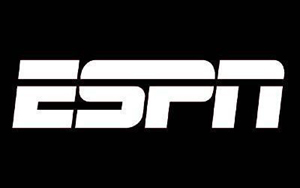 Twitter has grown tremendously since its creation in 2006. This year, it will be interesting to watch its growth as more media outlets figure out how to harness its potential to their advantage.
Twitter has grown tremendously since its creation in 2006. This year, it will be interesting to watch its growth as more media outlets figure out how to harness its potential to their advantage.
ESPN reporter Adam Schefter (@Adam_Schefter) has amassed over 82,000 Twitter followers since he first started using the microblogging site. His incorporation of Twitter into his journalism is being praised by both his boss and various public relations commentators. ESPN has no particular guidelines for its employees’ use of Twitter yet, but Schefter described his personal policy in a Sporting News interview:
Schefter explained that there is no hard-fast rule from ESPN to supply information that way, explaining, ‘I like to file it to ESPN, give them about 10 minutes to get everything together and then I’ll put it up on Twitter ‘filed to ESPN.’ I think that’s a fair way of doing it. Every situation is different.’
Although ESPN did release a general social media policy this past August, ESPN’s Editor-in-Chief Rob King confirms that there is no official policy pertaining specifically to Twitter. King does support Schefter’s method, however:
The way we ask people to operate as part of our guidelines is to, particularly with breaking news, inform the news desk before they go out into the Twitterscape. But that’s a very quick process and I think Adam’s a pretty good example of how it’s done — touch base, let the people know here so we can get the word moving across all the platforms and then he can reach out to people through social media.
It’s sort of strange that the company does not have an official policy yet, especially after the mild controversy stemming from ESPN writer Bill Simmons’ Twitter feud (see: 1, 2) with sports radio station WEII-FM just a couple of months ago. For his transgressions, Simmons received what barely feels like a slap on the wrist: two weeks of probation from using Twitter to talk about anything other than his book tour. EIC King did address the violation in his own blog:
While it’s unfortunate — and sometimes painful — that not everyone outside of ESPN chooses to play by such rules, we choose to hold ourselves to higher standards. Regardless of the provocation, Bill’s communication regarding WEEI fell short of those standards. So we’ve taken appropriate measures.
Simmons responded to the suspension in an interview with Sports Business Daily. Earlier this month, he criticized his employer’s social media policy again, writing “[…] what’s the point of governing Twitter if you don’t take it seriously?” through his Twitter account, @sportsguy33. Apparently, Simmons had scooped some information on New England Patriots quarterback Tom Brady in December, but then fellow reporters Schefter and Charley Casserly were credited for breaking the news weeks later.
ESPN’s trials and triumphs with Twitter prove that corporations, especially media providers, can’t wait until details of a social media policy are ironed out before letting their employees experiment — or you miss out on the opportunities. The rules will change quite frequently anyway as the tools are ever evolving. The problem is, of course, that with the indexing capabilities of the Internet, those mistakes are really hard to wipe away.
It’s so fascinating to me that we are currently watching the events that will become textbook case histories someday.
SOURCE: “Press Coverage: ESPN’s Schefter, King Talk Social Media,” Sporting News, 01/11/10
SOURCE: “Bill Simmons Hammers ESPN’s Twitter Policy,” The Huffington Post, 01/14/10
Image: ESPN logo/fair use: reporting.